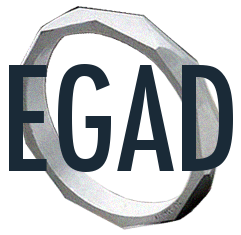Module 1 – Program Evaluation
Outcomes Based Program Review: Getting Started
![]()
The thought of undertaking a comprehensive program review can be pretty daunting.  An effective and constructive way of easing into the process is to examine the foundations of the program(s) you offer and the characteristics of the students you serve. Doing so ensures that you’ll be able to not only demonstrate the ways your programming supports the development of the 12 CEAB-identified attributes but also highlight any unique attributes that your program supports. This process also makes it a little easier to describe the characteristic behaviours (indicators) you expect students to demonstrate in the context of your programs.
The purpose of this module is to familiarize you with some preliminary program evaluation activities and help you explore what the Engineering Graduate Attributes look like in the context of your own program(s). To do that we’ll walk you through a series of questions to focus your efforts and then guide you through identifying and writing effective indicators, those characteristic skills and behaviours that will enable you to determine that students have acquired the Graduate Attributes.
In this module you will:
- Clarify the unique aspects of your program and the types of students who take part in it.
- Troubleshoot samples of indicators (characteristic behaviors) of Graduate  Attributes.
- Define the Graduate Attributes in the context of your own programs by writing effective indicators.
![]()
Establishing Your Unique Program Parameters
![]()
The aim of all engineering programs in Canada now is to support students’ development of the 12 Engineering Graduate Attributes, but the way that schools choose to do this is entirely up to them. Because the requisite attributes have been provided as identified outcomes, we know what students must be able to do when they leave our programs. But the raw material we have to work with necessarily influences programming decisions, and each student body has its own unique characteristics.  Getting a handle on who your students are might help you better define the specific ways your program supports their development. Take some time to complete the following two activities as we will be building upon this information in the modules to follow.
![]()
[expand title=”Learning Activity: What does a typical entry-level student to your program look like?”][/expand]
- What are their strengths?
- What attitudes do they display?
- What knowledge gaps or misconceptions do they have?
[expand title=”Learning Activity: Using the information you’ve just generated, consider the ways your program has been tailored to support the types of students who typically choose to enter it.”][/expand]
- What unique approaches to teaching does your department engage in to support the type of students you draw?
- What unique benefits do your students and the broader community gain by the approaches you take?
In answering the questions:
- What do you do?
- For whom?
- For what benefit?
you clarify and articulate the purpose of your program.
